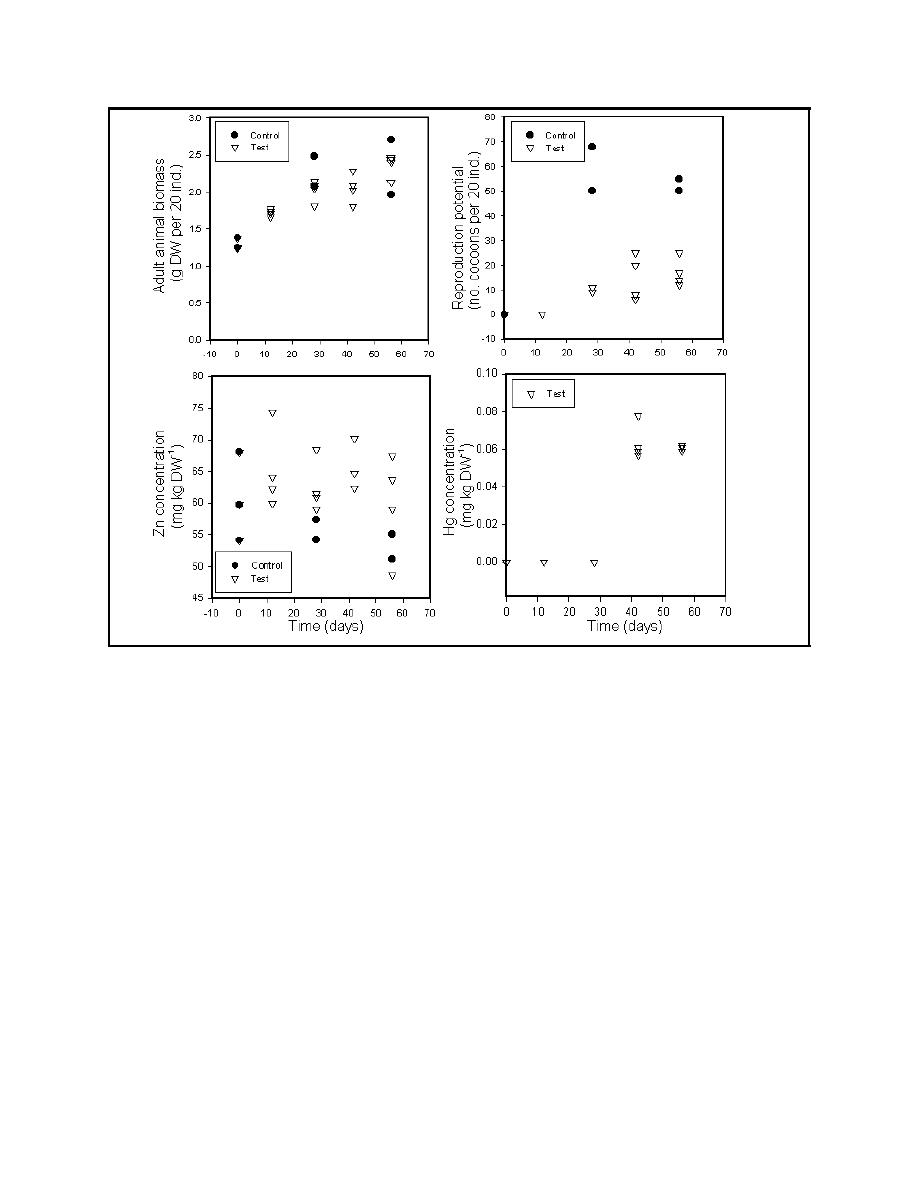 |
||
|
|
||
|
Page Title:
Figure 4. Growth and reproductive response, and bioaccumulation of zinc and mercury in adult E. fetida worms cultivated on te... |
||
| |||||||||||||||
|
|
 ERDC TN-DOER-C22
September 2001
Figure 4. Growth and reproductive response, and bioaccumulation of zinc and mercury in adult E. fetida
worms cultivated on test dredged material and control soil in 1-kg cylinders
matter contents. However, at this time use of the enchytraeid worm, E. crypticus, for dredged
material toxicity screening needs additional development and testing.
SUMMARY: Three CDFs in the Great Lakes area with known predredging contaminant types and
levels were initially selected for verification of dredged material chemical composition, evaluation
of nutrient levels, and preliminary survey of landscape and biota: Monroe, MI, Manitowoc, WI,
and Bayport, WI. Typical characteristics of the dredged materials that set them apart from most
soils are the low organic matter content (compared to soils), low bulk density, relatively high
plant-available phosphorus, and low nitrate-nitrogen concentrations. All sites are characterized by
the presence of a ponded area, an intermediate area occupied by herbaceous vegetation typical for
highly disturbed systems, and a forested upland area. Invertebrate diversity and abundance varied
per site, both being highest at sites where the dredged material had become consolidated, the water
table had decreased, and vegetation had been established. Springtails and earthworms were fairly
common, and are considered as suitable test organisms for these dredged materials. Dredged
material of the Monroe site was selected for further bioassay testing of inorganic contaminants.
Suitable plant species for testing were found to be Cyperus esculentus, yellow nutsedge, and
Cynodon dactylon, common bermudagrass. Eisenia fetida, an earthworm, was identified as a
16
|
|
Privacy Statement - Press Release - Copyright Information. - Contact Us - Support Integrated Publishing |